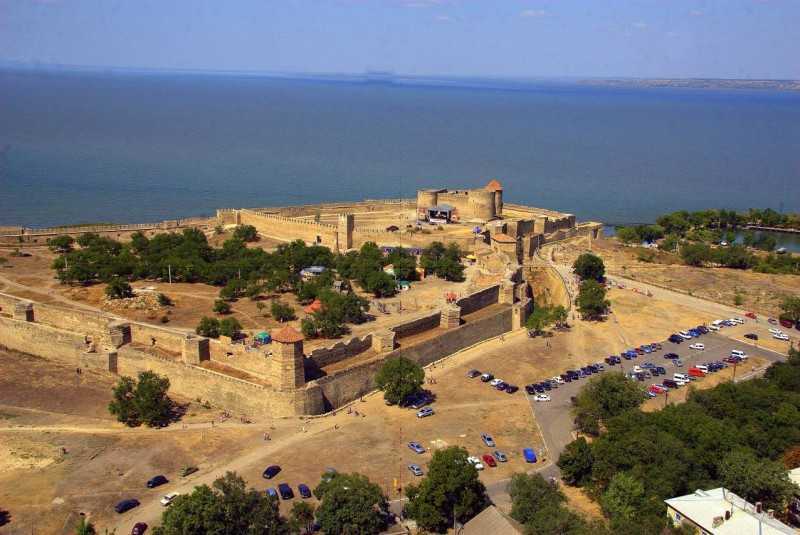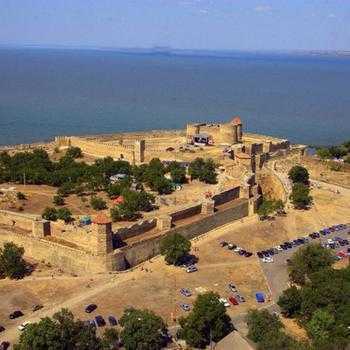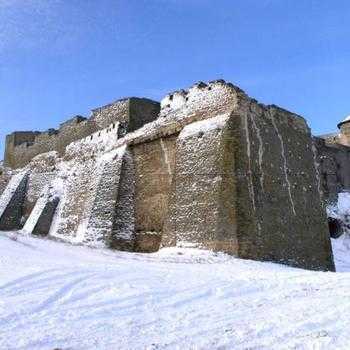About the city

Belgorod-Dniestrovsky is located on the south bank of the Dniester estuary. The city has a centuries-old history, during which it has changed its name several times, though retaining its main meaning – “White City”. The city always was one of the most important craft and trade centers, through which passed the main trade routes, connecting the Eastern and Western Europe, countries of the East with the northern lands.
The history of the city starts from its foundation at the end of VI century b.c., when the natives of the Asia Minor Greek city of Miletus have founded on the banks of the Dniester estuary a well-known city Ofiussa-Tyra. This fact is proved by the findings, discovered during the archaeological investigations of the urban cultural layers of Tyra: painted and black-glazed East-Greek pottery, numerous amphorae, etc.
The first descriptions of the Lower Dniester region has left in his legendary “History” Herodotus, who showed that on these lands lived the Hellenic (ancient Greek) population.
The residues of the ancient Greek city Tyra are located on the territory of Belgorod-Dniestrovsky city, on cape, which is partially occupied by Akkerman (Ackerman) medieval fortress. There were discovered the remains of numerous buildings, streets of ancient city, towers of fortress and administrative buildings, which clearly show that Tyra was one of the largest trading centers not only on Dniester Basin but on the whole territory of North-Western Black Sea.
This is also proved by numerous finds of marble statues, objects made of metal, glass, ceramics - highly artistic and domestic, for everyday life. The city minted its own coins in copper, silver and gold. It carried out extensive trade with the tribes of the Scythians, Goths, Sarmatians and other nomadic and agricultural peoples who lived in the North-Western Black Sea region. Besides trade, the inhabitants of Tyra were engaged in agriculture - farming, animal husbandry, vine-growing, as well as various crafts and fishing.
In the middle of the XIII century Belgorod has suffered the Mongolian-Tatars invasion and entered the khan's Nogaya possessions. The excavations show that in the XIII-XIV centuries the city was a major trade and crafts center and port. Silk Way passed through Belgorod, connecting city with the Middle East. The earliest walks on "Belgorod Way” to the East dates back to 1370 year.
At the end of the XIV century Belgorod has entered the Moldavian principality and became its main port. At this time there was carried out the construction of a major fortress, which basically was completed in the XV century. That time the city was called Chetatya-Alba. About twenty thousand people lived in the city.
The fortress is preserved almost completely till our time. It has the shape of an irregular polygon with the area of approximately nine (9) hectares. Three sides of the fortress are surrounded by a protective moat, depth of which reaches twenty (20) meters, width is 13.5 meters. Exterior walls of the fortress stretch for a distance of almost 2.5 kilometers. They reach a height of twelve (12) meters, and their thickness reaches five (5) meters. Thirty four (34) rectangular, round and polygonal towers are built into the walls of fortress. The fortress is made of the local limestone. The medieval fortress is divided by inner walls into four (4) courts (yards).
In 1420, the city had repelled an attack of the Turkish fleet which tried to capture the city. In 1484, the armies of sultan Bayazet and Crimean khan Mengli-Giray after sixteen days of siege have captured the city Belgorod. Since that time the city had a new name – Akkerman - and joined the Ottoman lands as an important strategic center.
After inclusion of the city into the Russian empire, the peasants from Ukrainian and Moldavian villages, as well as the Cossacks, have come here, trying to escape the oppression of serfdom. The Bulgarians, who have escaped from the Balkan countries, which were enslaved by the Turks, also settled here. The population of the city was constantly increasing and in 1861 has created more than forty two (42) thousand people. The port played the significant role in the life of the city, through which the agricultural products were mainly exported.
In spite of the provincial position in the Russian Empire, Akkerman took active part in the political and cultural life of country. The participants of the Decembrist movement – M.F. Orlov, O.P. Yushnevsky, I.I. Pushchin – have visited Akkerman many times. V.F. Raevsky served here. During the southern exile, the famous Russian poet A.S. Pushkin has spent three days in the city. In 1825, the famous Polish poet Adam Mitskevich has visited the city.
At various times, the famous Polish prose-writer Y.I. Krashevsky, the famous Russian writers M. Gorky, K.P. Paustovsky, outstanding figures of Ukrainian culture - Lesya Ukrainka, I. Nechuy-Levitsky, M. Kropivnitsky, Tobilevich brothers (P.K. Saksagansky and I.K. Karpenko-Kary), M. Zankovetskaya and others have visited the city Akkerman.
In 1944 the city was re-named to Belgorod-Dniestrovsky. In addition to the remains of the ancient city Tyra and the medieval fortress, the other historical monuments are preserved in the city: "Scythian grave", medieval Armenian Church of the Assumption of the Blessed Virgin Mary (XIV century), New-Greek Church of St. John the Precursor (XIII -XVI century), the spring of St. John Sochavsky (New) - the saint protector of Bessarabiya region, who died in the city around the end of XIII century, etc. All these historical monuments and objects require urgent conservation and restoration works.
Thus, Belgorod-Dniestrovsky has a rich, more than 2500 years, history and is one of the oldest cities not only in Ukraine but also in the world. It is necessary to create here a reserve, which will preserve for future generations this unique historical complex.
Monuments of architecture and city-construction of Belgorod-Dniestrovsky. Akkerman fortress
At the end of the XIV century Belgorod has entered the Moldavian principality and became its main port. At this time there was carried out the construction of a major fortress, which was completed in the XV century. About twenty thousand people lived in the city. The fortress is preserved almost completely till our time. It has the shape of an irregular polygon with the area of approximately nine (9) hectares. Three sides of fortress are surrounded by a protective moat, depth of which reaches twenty (20) meters, width is 13.5 meters. Exterior walls of the fortress stretch for a distance of almost 2.5 kilometers. They reach a height of twelve (12) meters, and their thickness reaches five (5) meters. Thirty four (34) rectangular, round and polygonal towers are built into the walls of fortress. The fortress is made of the local limestone. The medieval fortress is divided by inner walls into four (4) courts (yards).
Armenian Church
The oldest church in our city is the Armenian Church (XIV-XV cc). The Armenian Church of the Assumption of the Blessed Virgin Mary is located on the area, which is enclosed with the stone wall.
There are several lapidary inscriptions on the marble slabs, imbedded in the walls of the church, as well as on the plates which served as tombstones. Among all inscriptions on the tombstones there are no one inscription, dated later than XVIII century. Till the end of the XVIII century dead people were buried in a cemetery on the precinct of the church and only from the XIX century people were buried in the Armenian cemetery, located on the outskirts of the city (now this cemetery does not exist.)
Excavations of the ancient city Tyra
We shall start the acquaintance with Belgorod-Dniestrovsky from the ruins of ancient Tyra. Here was laid the first stone of the future city.
The first settlers of Tyra were the Greeks. They were forced to come to the shores of the Northern Black Sea by their indigence. They were looking for happiness outside of their motherland. In the middle of 6-th century b.c. they have landed on the banks of the Dniester river, where they have founded a city Tyra (in ancient times the river Dniester had another name – Tyra (Tiras)).
The cultural layer reaches 6 meters in some places and is rich in objects of material culture of different epochs. During many centuries there was re-segregation of the layers, so very often people find ancient coins in 30-40 cm from the surface and more deeply – yataghan, medieval pottery and other things.
Belgorod-Dniestrovsky Museum
The guests of the city always ask the way to the museum of local lore, history and economy. The oldest museum in the southern region of Ukraine attracts attention of people not only by the oldest exhibits, but remarkable architecture of its buildings.
The main building of the museum of regional studies was built in the last quarter of the century in the Empire style. It is located on Pushkin street, 19. There is exposition about the history of the city and the region, starting from ancient times till our days. The ancient city is shown very well. You can see the tools and devices, rare ancient coins, carved in stone letters, masterpieces of art of the ancient peoples who inhabited the North-Western Black Sea region.
The exposition presented in one of the rooms tells about the medieval city. In the next room there are collections of guns, personal things, documents and other items which tell about the heroism of our soldiers during the Second World War. Attention of the visitors is attracted by the exhibits in the sections of ethnography, nature of the region. The modern city is also widely presented in the museum.

